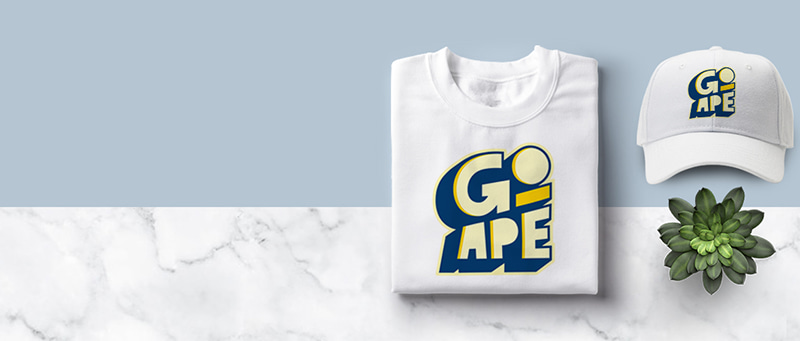The Best Fabrics to Look for in Branded Clothing for Summer
The Best Fabrics to Look for in Branded Clothing for Summer
Blog Article
Comprehending Garments: The Significance of Textile Choices in Your Closet
The selection of textile in clothes plays a pivotal function in both aesthetics and performance. Different materials use varying levels of convenience, longevity, and breathability, directly affecting the user's experience. Comprehending these subtleties can boost one's closet significantly. Lots of neglect just how these selections can influence not just personal design, but additionally sustainability. What textile choices could redefine your wardrobe and straighten it with both design and obligation?
The Duty of Fabric in vogue and Functionality

Common Textile Types and Their Attributes
When picking clothing, recognizing the features of common textile kinds is necessary for making informed choices. Cotton, a widely-used all-natural fiber, is understood for its soft qualities, breathability, and flexibility, making it appropriate for sportswear and day-to-day garments. Bed linen, another natural option, flaunts superb moisture-wicking homes and a distinctive appearance, suitable for warm climates.Wool, often favored for its warmth and sturdiness, varies in excellence; merino wool is soft versus the skin, while coarser kinds are utilized for outerwear. Artificial textiles like polyester and nylon use longevity and resistance to wrinkles, making them popular for activewear and travel garments. Lastly, blends, which incorporate synthetic and all-natural fibers, can boost functionality while preserving comfort. By identifying these fabric characteristics, individuals can select clothes that aligns with their way of life and visual preferences.
Breathability and Convenience: Choosing the Right Fabrics for Different Climates
Picking the best fabrics for numerous climates can substantially improve comfort and total wearability. Breathable materials are vital in hot environments, as they permit air circulation and wetness dissipation. Fabrics such as cotton, bed linen, and moisture-wicking synthetics efficiently draw sweat far from the body, keeping the wearer cool and dry. On the other hand, in colder environments, thicker textiles like wool or fleece supply insulation while maintaining breathability, making sure heat without overheating.Additionally, the choice of textile weight plays an important duty; light-weight materials are preferable for summer season, whereas larger alternatives are matched for winter wear. Understanding the distinct residential properties of each textile allows individuals to dress suitably for varying weather problems. Eventually, selecting breathable and comfortable textiles tailored to certain environments can substantially improve day-to-day comfort and enhance the general experience of putting on garments.
Longevity and Treatment: Just How Material Affects Long Life of Your Wardrobe
Picking the best products can substantially impact the sturdiness and care needs of a closet. Fabrics such as cotton and polyester are recognized for their strength and ease of maintenance, making them ideal for everyday wear. In comparison, fragile materials like silk and shoelace need even more mindful handling and specialized cleaning methods, which can boost the time and initiative needed for care. Branded Clothing.Durability is likewise affected by the material's weave and finish; tightly woven textiles tend to withstand deterioration much better than loosely woven options. In addition, artificial blends commonly supply boosted durability, incorporating the most effective top qualities of multiple fibers.Understanding the treatment instructions for every fabric is crucial, as improper drying out or cleaning can lead to premature wear. Eventually, choosing durable materials can bring about a longer-lasting wardrobe, reducing the frequency of substitutes and adding to a more sustainable fashion selection
The Effect of Textile on Fit and Silhouette

Sustainable Textile Selections: Making Eco-Friendly Decisions
The impact of textile expands beyond fit and silhouette to incorporate environmental factors, triggering a growing rate of interest in sustainable textile options. Green materials, such as organic cotton, hemp, and Tencel, are obtaining traction amongst customers who focus on sustainability in their wardrobes. These products are often created with less chemicals and water, minimizing their eco-friendly footprint.Additionally, recycled textiles, made from post-consumer waste, use an innovative option to the fabric market's contamination issue. Brands increasingly embrace transparency in their sourcing approaches, allowing customers to make informed choices about their purchases.Choosing lasting fabrics not only supports ethical practices but additionally encourages the garment industry to take on even more accountable production approaches. As awareness of environmental problems rises, people are prompted to assess the long-term impact of their material choices, fostering a movement towards a more sustainable and informative post ecologically conscious strategy to style.
Raising Design: How Fabric Can Transform an Outfit
While lots of might concentrate on color and cut when choosing a clothing, the option of textile plays a crucial duty in raising design and enhancing overall look. Various products share unique moods and messages; for example, silk emanates deluxe and refinement, while jeans uses a laid-back, loosened up ambiance. The texture and drape of a fabric can drastically change the silhouette, with organized materials giving a sleek appearance and softer ones producing a more fluid, unwinded aesthetic.Moreover, the weight of the fabric affects wearability across seasons. Light-weight materials like bed linen and cotton are excellent for summer, while heavier materials such as woollen and velvet provide heat and style in chillier months. Understanding Homepage fabric properties, such as breathability and stretch, additionally equips people to make informed options that enhance convenience without jeopardizing design. Ultimately, the appropriate textile can transform an attire from normal to amazing, making it an essential factor to consider in any kind of closet.
Regularly Asked Questions
Just how Do I Identify the Fabric Content of My Clothing?
To identify fabric content, one can check out treatment labels, conduct shed examinations for fiber recognition, or seek advice from textile examples. These approaches assist differentiate products, ensuring educated choices for clothing care and maintenance in day-to-day wear.
Can Textile Option Affect My State Of Mind or Self-confidence?
Material selection can significantly affect an individual's state of mind and self-confidence. Branded Clothing. Certain materials might stimulate sensations of convenience or beauty, while others can really feel restrictive or uncomplimentary, inevitably influencing self-perception and psychological health throughout the day
What Fabrics Are Best for Delicate Skin?
For people with sensitive skin, natural fabrics like bed linen, bamboo, and cotton are typically advised. These products are breathable, hypoallergenic, and less most likely to trigger irritation, making them suitable selections for comfort and skin health.
Exactly how Do I Correctly Laundry and Care for Various Fabrics?
To properly clean and care for various materials, one have to consider each product's certain needs, consisting of temperature level setups, cleaning agents, and drying techniques, making certain long life and maintaining the textile's original qualities for excellent use.
Are There Certain Fabrics for Athletic or Performance Wear?
Athletic or efficiency wear usually makes use of fabrics such as nylon, spandex, and polyester. These materials are created for moisture-wicking, breathability, and versatility, enhancing movement and convenience throughout exercises while giving longevity and assistance. Conversely, in cooler environments, thicker textiles like woollen or fleece provide insulation while retaining breathability, ensuring warmth without overheating.Additionally, the option of fabric weight plays a vital role; lightweight fabrics are more effective for summer season, whereas larger alternatives are fit for wintertime wear. investigate this site In comparison, delicate materials like silk and shoelace need more mindful handling and specialized cleaning techniques, which can boost the time and initiative needed for care.Durability is likewise influenced by the material's weave and finish; securely woven fabrics have a tendency to withstand wear and tear much better than loosely woven alternatives. In comparison, stiff fabrics can restrict movement but give a traditional, polished look.Moreover, the density and structure of the material can influence the visual perception of body form. The effect of fabric expands beyond fit and silhouette to incorporate environmental factors, triggering an expanding passion in lasting textile choices. The appearance and drape of a material can significantly change the silhouette, with organized textiles giving a refined look and softer ones producing a much more fluid, loosened up aesthetic.Moreover, the weight of the textile influences wearability across seasons.
Report this page